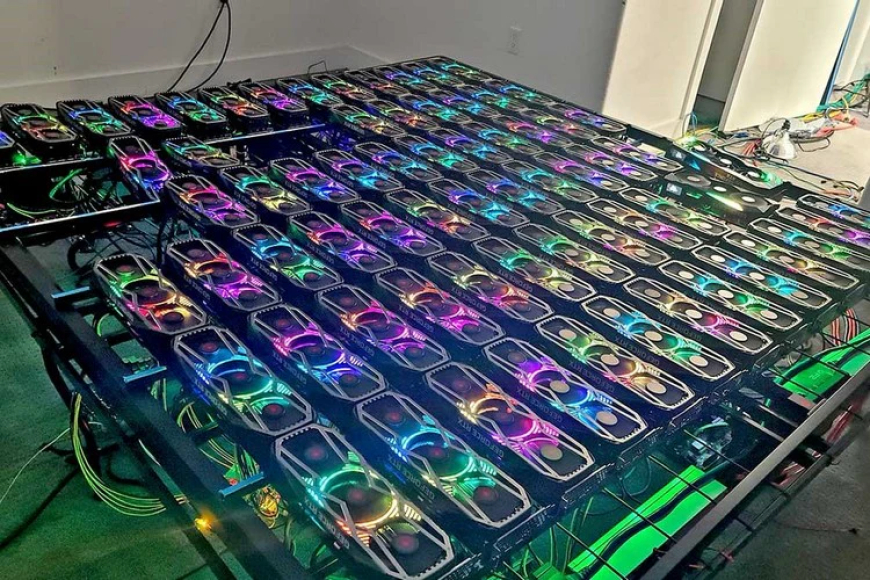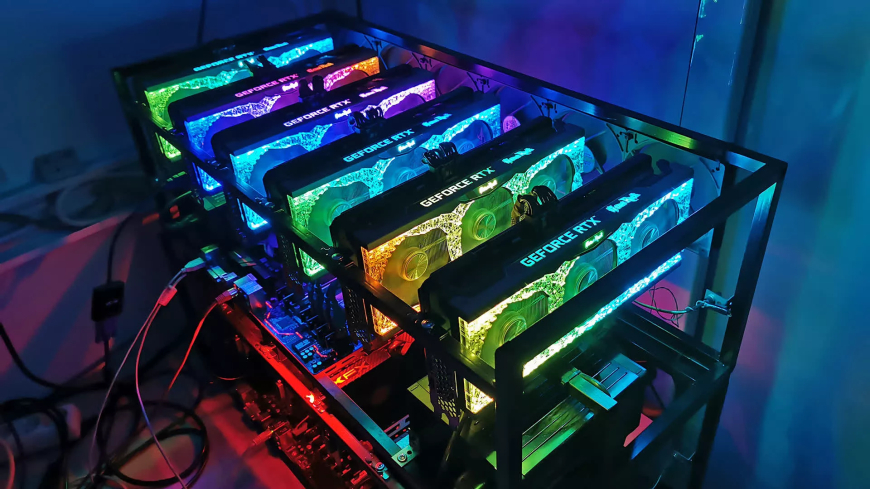The cryptocurrency mining landscape has undergone a dramatic transformation in recent years, leaving many GPU miners questioning whether their operations are still worthwhile. Once a lucrative venture for tech enthusiasts and investors alike, GPU mining has faced increasing challenges that have eroded its profitability. In this article, we'll explore the key factors behind this shift and what it means for the future of mining.
The Golden Age of GPU Mining
Just a few years ago, GPU mining was the backbone of the cryptocurrency revolution. Enthusiasts could purchase high-end graphics cards, set up mining rigs in their basements, and watch as digital coins like Ethereum (ETH) and Litecoin (LTC) poured in. The rise of decentralized finance (DeFi) and non-fungible tokens (NFTs) further fueled demand for blockchain transactions, increasing the need for miners to validate transactions and secure the network.
The appeal was clear: with relatively low upfront costs and the potential for passive income, GPU mining democratized access to cryptocurrency wealth. Miners could earn returns on their investment within months, especially as coin prices surged and network difficulties remained manageable.

The Profitability Equation
Mining profitability depends on several critical factors:
-
Cryptocurrency Prices: The value of the coins you mine directly impacts your revenue. When prices soar, profits skyrocket; when they plummet, so do earnings.
-
Hash Rate: Your mining rig's computational power determines how much work you contribute to the network. Higher hash rates mean more rewards—but they also require more powerful (and expensive) hardware.
-
Electricity Costs: Mining consumes massive amounts of energy. Regions with cheap electricity have historically offered a competitive advantage, while areas with high utility rates often rendered mining unprofitable.
-
Mining Difficulty: As more miners join the network, the system automatically increases difficulty to maintain consistent block times. This creates an arms race where miners must continuously upgrade hardware to stay competitive.
-
Hardware Costs: GPUs depreciate rapidly, and the initial investment must be recouped before profits can be realized.
The Perfect Storm Against GPU Mining
Recent developments have created unprecedented challenges for GPU miners:

1. Cryptocurrency Market Volatility
The crypto bear market of 2022–2023 saw Ethereum drop from over $4,000 to below $1,000, while Bitcoin fell from $69,000 to under $16,000. These declines drastically reduced mining revenues, making operations unprofitable for many.
2. The Rise of ASIC Miners
Application-Specific Integrated Circuits (ASICs) have become increasingly dominant in major cryptocurrencies like Bitcoin and Litecoin. These specialized devices outperform GPUs by factors of 100x or more in efficiency and hash rate, pushing GPU miners out of contention.
3. Energy Costs and Environmental Concerns
Rising electricity prices worldwide have made mining more expensive. In Europe, post-Ukraine war energy crises saw electricity costs triple in some regions. Meanwhile, environmental critics have targeted mining's carbon footprint, leading to regulatory pressures.
4. Proof-of-Stake Transition
Ethereum's 2022 merge to proof-of-stake (PoS) eliminated GPU mining for the second-largest cryptocurrency. This shift removed a major revenue stream for miners and signaled a broader industry trend toward more energy-efficient consensus mechanisms.
5. Market Saturation
The ease of entry into GPU mining led to an oversupply of computational power. Network difficulties skyrocketed, requiring miners to invest in increasingly powerful (and expensive) hardware just to maintain their earnings.
The Financial Reality
Let's crunch some numbers to illustrate the current landscape:
-
Ethereum Classic (ETC): Once a GPU miner's favorite, ETC's profitability has plummeted. With a current hash rate of 80 TH/s and electricity costs at $0.12/kWh, a high-end GPU rig might earn just $20–$30 monthly after expenses.
-
Ravencoin (RVN): Another GPU-friendly coin, RVN's mining rewards have fallen by 60% in the past year. Miners now face break-even points extending beyond 18 months.
-
Dogecoin (DOGE): While DOGE remains mineable with GPUs, its lower value and higher energy consumption make it less attractive than ever.
Alternatives to GPU Mining
Miners seeking profitability have several options:
-
ASIC Mining: Specialized hardware offers superior efficiency for coins like Bitcoin and Litecoin, though initial costs are prohibitive.
-
Cloud Mining: Services like Genesis Mining and NiceHash allow users to rent mining power without hardware investments, though returns remain modest.
-
Staking: For proof-of-stake coins like Cardano (ADA) and Solana (SOL), staking offers lower-risk returns without computational demands.
-
Alternative Cryptocurrencies: Some newer coins like Ergo (ERG) and Akash Network (AKT) maintain GPU-friendly mining algorithms, though market adoption remains limited.
The Future of GPU Mining
While traditional GPU mining faces headwinds, innovation continues:
-
Green Energy Solutions: Miners adopting solar, wind, or hydroelectric power can reduce costs and environmental impact.
-
Multi-Algorithm Miners: New software allows GPUs to switch between coins based on real-time profitability, maximizing earnings.
-
Decentralized Mining Pools: These platforms aim to democratize access to mining rewards while reducing barriers to entry.
Conclusion
The golden age of GPU mining may be fading, but it's far from dead. Success now requires strategic planning, adaptability, and a willingness to explore new opportunities. For those willing to navigate the complexities, GPU mining can still yield returns—but the path forward is decidedly more challenging than in years past.










